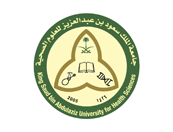Abstract
Purpose: How much time students spent on unstructured self-study activities in problem-based learning is not clear. The study addressed this issue by (1) identifying the nature of students’ unstructured learning activities in a problem-based medical curriculum, (2) measuring the unstructured student workload per week and per semester, and (3) assigning European Credit Transfer and Accumulation System units to the medical problem-based modules based on calculating the total student workload. Method: Nineteen undergraduate medical students in the pre-clerkship phase were enrolled in the study. Data about the nature of unstructured learning activities and the amount of time spent on them were collected through focus group interviews (n¼19); and a log diary method (n¼13) describing their unstructured educational activities over one week. A response evaluation model and a thematic description approach were employed for data collection and data analysis respectively. Results: A broad variations of unstructured learning activities were identified. The unstructured student workload ranged from 33 to 41 h/wk., while the total student workload was 63/58 h/wk. for years 2 and 3 respectively. The total student workload in a 15-week semester was 945 h in year 2 and 870 h in year 3, which equates with about 34 and 31 European Credit Transfer and Accumulation System per semester for years 2 and 3, respectively. Discussion: Measuring student total workload in a problem-based program is important for evading the associated overload, and improving the quality of teaching and learning. Calculating student workload in an integrated problem-based curriculum is a challenge. Total student workload is the foundation for determination of the European Credit Transfer and Accumulation System units. Measuring unstructured student workload (or “out-of-class” learning time) is an important component of total student workload. Assigning the European Credit Transfer and Accumulation System to problem-based programs improves its quality assurance, and has educational, curricular, and organizational impact. Therefore, student workload in such programs should be regularity monitored and evaluated.
Recommended Citation
Nosair, Emad and Hamdy, Hossam
(2017)
"Total Student Workload: Implications of the European Credit Transfer and Accumulation System for an Integrated, Problem-Based Medical Curriculum,"
Health Professions Education: Vol. 3:
Iss.
2, Article 6.
DOI: 10.1016/j.hpe.2017.01.002
Available at:
https://hpe.researchcommons.org/journal/vol3/iss2/6



